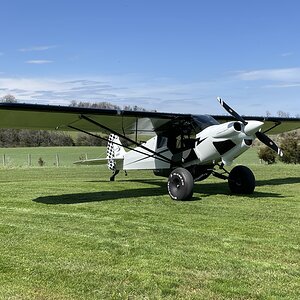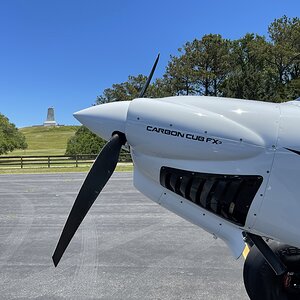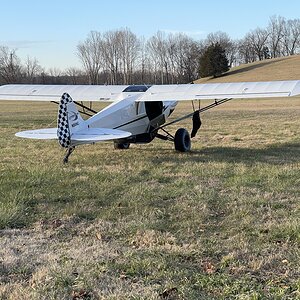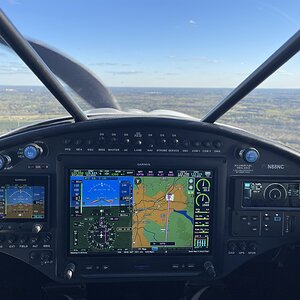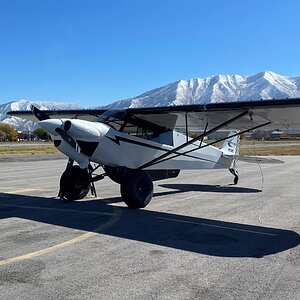Navigation
Install the app
How to install the app on iOS
Follow along with the video below to see how to install our site as a web app on your home screen.
Note: This feature may not be available in some browsers.
More options
Welcome to Flightinfo.com
- Register now and join the discussion
- Friendliest aviation Ccmmunity on the web
- Modern site for PC's, Phones, Tablets - no 3rd party apps required
- Ask questions, help others, promote aviation
- Share the passion for aviation
- Invite everyone to Flightinfo.com and let's have fun
You are using an out of date browser. It may not display this or other websites correctly.
You should upgrade or use an alternative browser.
You should upgrade or use an alternative browser.
Why do they call them "Steam Gauges?"
- Thread starter Way2Broke
- Start date
- Watchers 8
Fearless Tower
Well-known member
- Joined
- Mar 28, 2006
- Posts
- 275
erj-145mech
Well-known member
- Joined
- Aug 13, 2002
- Posts
- 1,071
A Squared
Well-known member
- Joined
- Nov 26, 2001
- Posts
- 3,006
Air powered. Just a slang term for air driven gyros.
I don't think that is it. It's generally used in the context of Transport Category aircraft (Glass has only very recently come to GA) and I think you'd be pretty hard pressed to find air driven gyros on even very old transports. The DC-6 is all electric gyros, always was. It's more that the round dials with needles (or other mechanical indicators) are considered outmoded technology, like the steam engine, which also had round gauges with pointers.
mzaharis
Well-known member
- Joined
- Sep 27, 2004
- Posts
- 541
Any old steam-powered system is going to have a number of round-dial pressure gauges, of which the old-style aircraft instrumation is reminiscent. The fact that steam power is associated with archaic technology just makes it a bit more perjorative.
http://www.steamtraction.com/article/2005-07-01
http://www.greatsouthbay.com/DDeckPFER.htm
http://www.steamtraction.com/article/2005-07-01
http://www.greatsouthbay.com/DDeckPFER.htm
mzaharis
Well-known member
- Joined
- Sep 27, 2004
- Posts
- 541
instrumation
Instrumentation - I wasn't drunk posting - honest!
- Joined
- Aug 18, 2005
- Posts
- 2,507
Round dials. Like Steam powered machinery like the locomotive.
They're being replaced in many airplanes for:
A. Making life easier on the pilot.
B. Increasing safety.
C Reducing maintenance.
I you picked C then you're correct!!
Finding old parts in increasingly expensive, 4 glass slabs can easily
replace 40 or more steam gauges and have a MTBF (Mean Time Before Failure)
10-100 times less than the older systems.
CE
They're being replaced in many airplanes for:
A. Making life easier on the pilot.
B. Increasing safety.
C Reducing maintenance.
I you picked C then you're correct!!
Finding old parts in increasingly expensive, 4 glass slabs can easily
replace 40 or more steam gauges and have a MTBF (Mean Time Before Failure)
10-100 times less than the older systems.
CE
nosehair
Well-known member
- Joined
- Sep 22, 2003
- Posts
- 1,238
What!?perjorative.
Alamanach
Look ma, no gear!
- Joined
- Apr 14, 2006
- Posts
- 197
What!?
Perjorative: derisive, insulting.
Somehow I can't buy into this explanation. Could it be that some older technology (and it may well have been steam engines) had steam-powered gages that were similar in operation (not appearance) to the air-driven gages of our airplanes? I don't know, I'm just asking. I've seen "steam gages" used when referring to aircraft instruments, but I can't recall the tone of such usage ever being perjorative.
enigma
good ol boy
- Joined
- Nov 26, 2001
- Posts
- 2,279
I don't know the exact history of "steam gauge" in it's aviation usage; but if you've ever been in the cab of a steam driven locomotive, you'll understand why we use the term.
I consider the term to refer to the entire cockpit display, not to the individual instrument.
Every town used to have a retired locomotive parked somewhere. Go check it out. Chicago's Museum of Science and Industry has one, as well as the Henry Ford Museum in DTW and the Smithsonian at DC.
I consider the term to refer to the entire cockpit display, not to the individual instrument.
Every town used to have a retired locomotive parked somewhere. Go check it out. Chicago's Museum of Science and Industry has one, as well as the Henry Ford Museum in DTW and the Smithsonian at DC.
Latest posts
-
-
MOD Upgrading the ignition backup battery in a Carbon Cub FX-3
- Latest: Cactus Charlie
Latest resources
-
-
-
-
-
AC 90-89C - Amateur-Built Aircraft and Ultralight Flight Testing HandbookAmateur-Built Aircraft and Ultralight Flight Testing Handbook
- Neal
- Updated:

